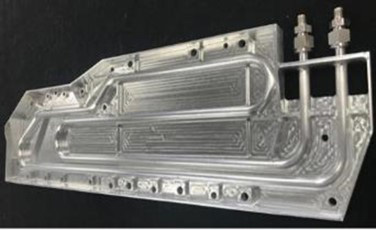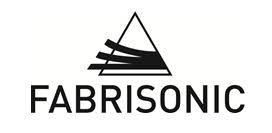


A heat exchanger manufactured by Fabrisonic utilizing ultrasonic additive manufacturing technology
Problem
Ultrasonic additive manufacturing (UAM) uses sound to merge layers of metal drawn from foil stock. The process produces true metallurgical bonds with full density in a variety of metals. Understanding the mechanical performance of UAM, however, is limited in comparison to more mainstream additive processes. Some performance data exists, but most of the data has been funded through commercial sources and is considered proprietary to the entities who have funded the testing. This lack of public data has slowed the adoption of this unique solid-state metal 3D printing process.
Objective
The goal of this program was to create a statistically significant tensile data set to meet the forthcoming Metallic Materials Properties Development and Standardization (MMPDS) Volume II D-Basis material properties. As such, the project worked toward three main objectives: developing a D-Basis data set for AA 6061 UAM material comprised of tensile properties of UAM parts from various orientations; sharing a partial D-Basis data set with program partners to enhance the adoption and acceptance of UAM for business and design needs; and providing a commercial UAM system to The Ohio State University (OSU) to develop demonstration articles and education models.
Technical Approach
Fabrisonic led the project effort which included 3Degrees, Westmoreland, and OSU. In compliance with MMPDS guidelines, work toward a D-Basis data set required at least three heats of material, but these standards recognize that material availability may be an issue in a limited time frame. Due to a lack of availability, only two heats were able to be sourced: one by US Foils and one by United Aluminum. Each heat was assigned to its own UAM machine. After the foil rolls were procured, additional characterization was performed by OSU and Westmoreland to determine foil surface roughness and tensile properties, respectively. The team evaluated as built and heat treated UAM sample groups to determine if heat treatment is advantageous for the purpose of UAM parts. 3Degrees TraceAM software was used to track the information throughout testing.
Accomplishments
A partial D-Basis dataset for UAM was developed to publicize information on UAM technologies. The heat treatment strategy helped to homogenize, decrease porosity, and enhance the strength of UAM parts; this was more evident in smaller parts because of enhanced heat transfer. Samples of heat and non-heat- treated materials were sent to Westmoreland for testing. It was discovered that the orientation of UAM parts showed little difference between the X and Y directions; however, there were substantial differences in strength in the Z direction. OSU received a SonicLayer1200 UAM machine for their students trained at Fabrisonic’s facilities and also created an educational package covering the basics of UAM to help disseminate information and educate the additive manufacturing community.
Project Participants
Project Principal

Other Project Participants
- 3Degrees
- Westmoreland Mechanical Testing & Research, Inc.
- The Ohio State University
Public Participants
- U.S. Department of Defense
